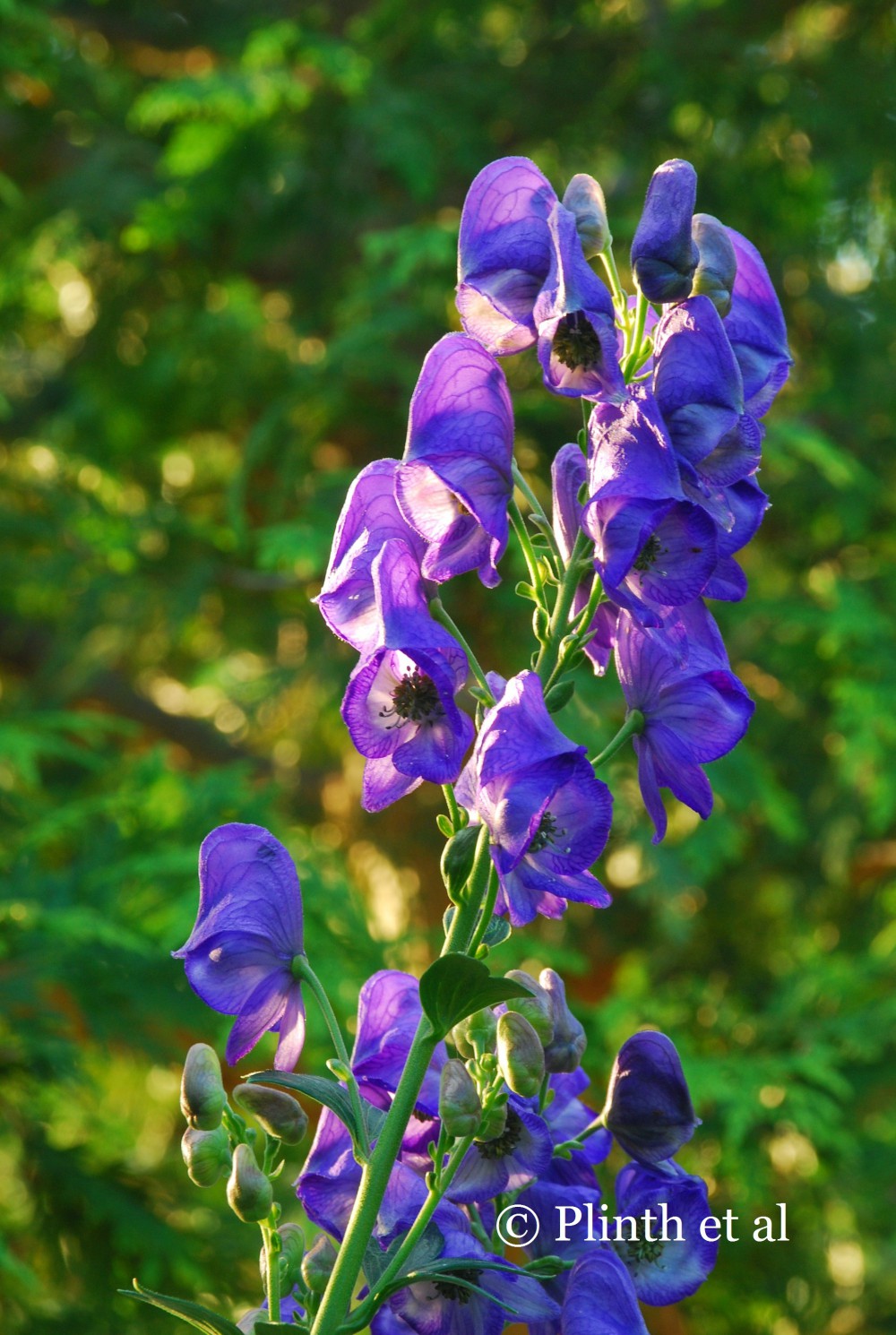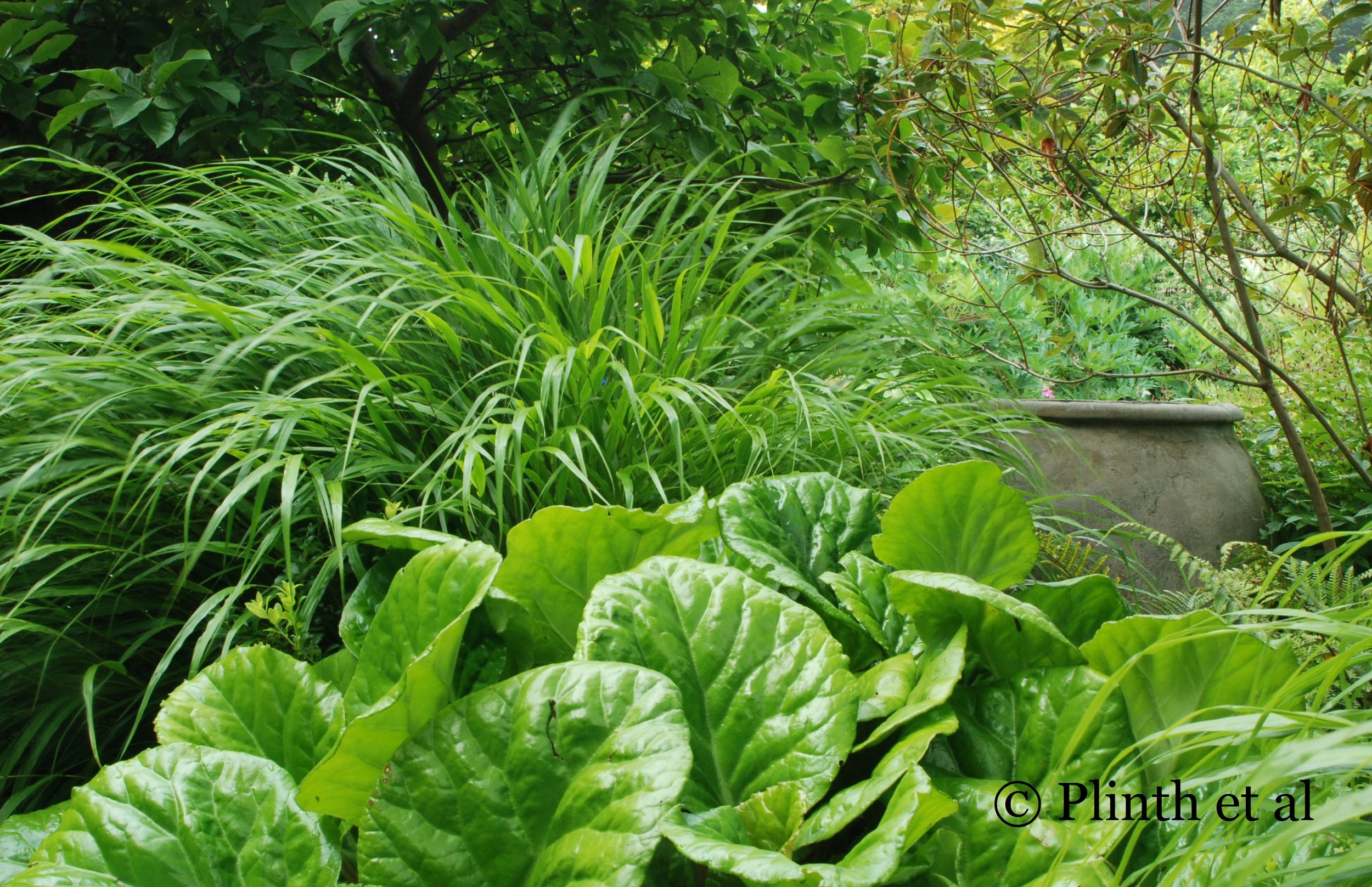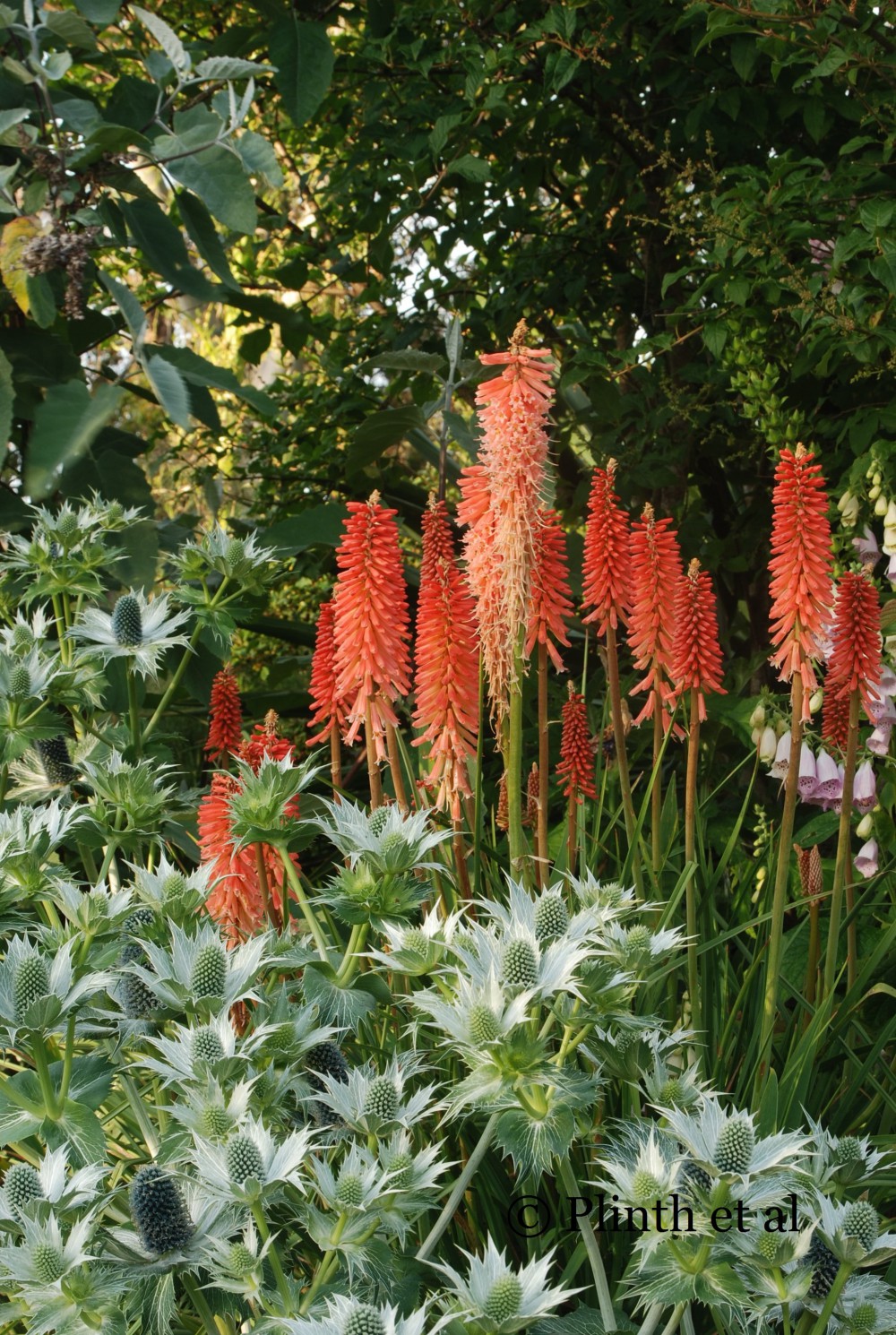A good garden should have a few workhouse plants that look good regardless of the growing season, one or two rarities that need a bit of cosseting or sheltered protection, and a smattering of annuals, tender perennials, and bulbs. Pam and Sibylle, the former head gardeners of Sissinghurst Castle Garden, always said that for every three plants, one plant will do well while the other two will be mediocre or do poorly. Where space is limited, one becomes more selective and discriminating on plant selection. As I move into my new house and have one's garden to call my own finally, I am forced to be catholic about what plants to grow. Visiting nurseries and gardens enable me to see how the plants look at maturity, whether the colors are appropriate for my designs, and what new plants have been introduced. The following herbaceous perennials and grasses, which tend to peak in summer, have caught my eye during my forays.
Aconitum carmichaelii 'Arendsii’
Autumn may seem ablaze with incidienary hues, yet a cooling refuge can be found among the dark blue-violets of aconitums. Being poisonous, aconitums do not fall prey to herbivorous critters. Their common name monkshood do resemble the ecclesiastical vestments of the religious higher clergy. The best of the lot is Aconitum carmichaelii 'Arendsii', a worthy tribute to Georg Arends who gave the horticultural world several outstanding perennials. Offset by glossy dark-green leaves on strong stems (5' to 6' tall), its glowing rich blue-violet flowers arrive in early to mid October just as the first of autumnal tints appear on trees. Do not plant 'Arendsii' in dry soil, which causes the lower stems to defoliate - rich, moist soil will produce the most floriferous plants.
Aruncus 'Horatio'
Aruncus 'Horatio' first came to my attention at the High Line where Piet Oudolf planted it with carices and Heuchera villosa 'Brownies'. Its flowers had long finished, yet they did not detract from the plant in any way, providing a textural, if not tonal, contrast with its companions.
Curiously difficult to acquire in the nursery trade, Aruncus 'Horatio' was one of the four seedlings (other three being 'Johannifest', 'Woldemar Meier', 'Sommeranfang') raised, evaluated, and named from the German nurseryman Ernest Pagels' deliberate cross between A. dioicus and A. aesthusifolius. 'Horatio' is said to be more drought tolerant and robust than either species, and has this added advantage over Aruncus, despite being white-flowered only. It inherited from Aruncus aesthifolius a finer and more delicate form, and the flowers do not turn brown simultaneously as they do in either parents. Instead, a two bicolor effect develops as the newer flowers open cream and older flowers gradually turn brown. In autumn the foliage can develop autumnal tints.
Hakonechloa macra
Hakonechloa macra is a rare example where its variegated versions 'Aureola ' and 'Albo-Striata' are more readily available than the straightforward species. It is a telling fact when Internet searches turn up 'Aureola' more than the species itself. As long as adequate moisture is provided, the green-leafed version is more tolerant of light than 'Aureola', which look unattractively bleached under full sunlight. Tom Stuart Smith, the British garden designer, favors Hakonechloa macra in his commissioned work especially as a ground cover against rigid shapes (in a London courtyard, H. macra swirls around clipped boxwood balls and Dicksonia antarctica (Tasmanian tree fern).
Helenium 'Sahin's Early Flowerer'
Helenium 'Moerheim Beauty' has been the benchmark by which subsequent heleniums have been judged. It does not seem prone to pests and diseases that beget the newer cultivars, and will flower for a long period as long as the flowers are regularly deadheaded. However, Helenium 'Sahin's Early Flowerer' has risen to be a equal contender - its clumps multiply within a short time, yielding more divisions to share or spread in the garden, and its cut flowers have remarkable longevity, holding up well and always inviting praise. The flowers of 'Sahin's Early Flowerer' appear more brilliantly saturated with reds, oranges, and yellows than 'Moerheim Beauty', and tend to hum with pollinators. In a large garden, I would plant aconitums, asters, dahlias, and grasses with Helenium 'Sahin's Early Flowerer' for that grand autumn spectacle.
Except for a few species like Kniphofia caulescens and K. northiae, kniphofias will rarely win the foliage sweepstakes for their unkempt leaves. Even the flowers can brown in an unappetizing way. Kniphofia 'Nancy's Red' is a tidy plant - the grass-like leaves do not kink in a disheveled pile, and the narrow spikes of coral-red flowers are profuse, attracting hummingbirds. It is reliably hardy, a virtue infrequently seen in showier kniphofias. I can imagine clumps of Kniphofia 'Nancy's Red' with the steel blue Ergynium planum, serpent-like coils of blue-green Euphorbia myrsinites, and rosettes of orange-flowered Glaucium flavum var. aurantiacum.
Phlomis russeliana
Phlomis russeliana is not an 'instant gratification' candidate for it needs at least three to four years to fulfill its full potential. For the first two years, it may throw a sporadic flower spike, instead focusing on root development (the North American prairie herbaceous perennials, Baptisia and Silphium, behave similarly). The whorled yellow flowers are arranged tier-like on the thick stems. Even if Phlomis russeliana failed to flower, its felted heart-shaped leaves are handsome, offering a solid foliar bulwark against finer textured plants. The most effective combination I have seen was in a trifecta with Stipa gigantea and Nepeta 'Six Hills Giant' at Cambridge Botanic Garden, Cambridge, UK. The durable seedheads are worth keeping for winter interest. Phlomis russeliana has been crossed with Phlomis fructiosa to produce 'Edward Bowles'.
Thalictrum 'Elin'
Thalictrum flavum ssp. glaucum can be unforgivingly floppy if not staked whereas Thalictrum rochebrunianum rockets upward without additional support. Coen Jansen, the Dutch nurseryman whose unerring eye for selecting good garden plants has rewarded us gardeners, combined the best attributes of these two meadow rues through 'Elin'. From Thalictrum flavum ssp. glaucum comes moody blue-green foliage suffused with purple and T. rochebrunianum the self-supporting habit. 'Elin' can tower to 6' in ideal conditions - in areas with hot summers, the foliage may become tatty and late summer dormancy can be expected. Because 'Elin' is a sterile hybrid, division is the best means of propagation (commercial nurseries depend on tissue culture).
In addition, I have shortlisted the following plants with promising potential and deserving wider evaluation.
Agapanthus 'Timaru' - London's The Financial Times garden columnist Robin Lane Fox singles out 'Timaru' and 'Jack's Black' among the best free-flowering New Zealand agapanthus hybrids that are hardy in United Kingdom and other places with moderate winters. He writes: "Two to look for are Jack's Blue and the vivid Timaru. They send up flowers into early October and are extremely free-flowering at rather different heights. Jack's Blue is tall, with stems up to four feet, but the flowers appear in quantity in a good shade of rich purple-blue. Marginally, I prefer Timaru, which is about two feet high and extraordinarily generous with a long succession of strong blue flowers on many separate stems." While agapanthus are not reliably hardy in the Mid-Atlantic region, I'm always on the outlook for good container subjects. Because their foliage is rather boring, agapanthus must be distinct and flower profusely enough to be worth the trouble.
Perovskia atriplicifolia Lacey Blue 'Lisslitt' - Perovskia or Russian sage is one of the quintessential summer perennials, yet sometimes I find its color a bit lackluster in our heat and the stems susceptible to flopping (save for lean soils). Lacey Blue is reputedly shorter and more floriferious, a better choice for smaller gardens. If the under 18" height of Lacey Blue proves true, then I am keen to pair it with Agastache rupestris.
Stipa lessingiana - Nassella tenuissima has become a garden designer's cliche for introducing a naturalistic, cloud-like effect, and one can hardly deny its versatility. Stipa lessingiana, a steppe grass from Caucasus and Siberia is said to be hardier and taller than Nassella tenuissima.
~Eric












